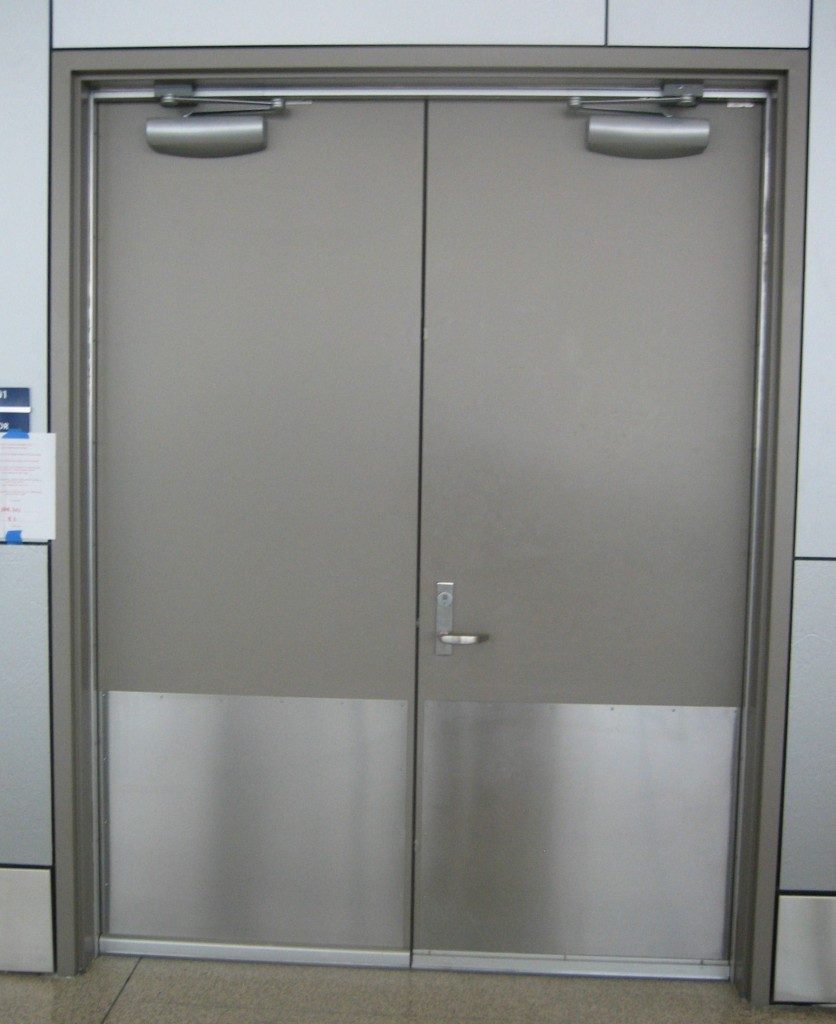 NFPA 80 – Standard for Fire Doors and Other Opening Protectives includes limitations on protection plates installed on fire doors. The purpose of these requirements is to address the installation of kick plates, armor plates, or stretcher plates that could otherwise affect the performance of the fire door assembly if a fire occurs.
NFPA 80 – Standard for Fire Doors and Other Opening Protectives includes limitations on protection plates installed on fire doors. The purpose of these requirements is to address the installation of kick plates, armor plates, or stretcher plates that could otherwise affect the performance of the fire door assembly if a fire occurs.
While previous editions of the standard differentiated between the labeling requirements of protection plates that were field-installed vs. plates that were installed at the door manufacturer’s facility or in a door distributor’s shop, beginning with the 2016 edition NFPA 80 requires plates to be labeled if they are extend above the bottom 16 inches of the door height – regardless of whether they are factory- or field-installed.
NFPA 101 – The Life Safety Code includes some specific references to protection plates in the health care chapters – for both corridor doors and smoke barrier doors in new and existing health care facilities; these references apply to non-fire-rated doors. When fire door assemblies are required in corridors and smoke barriers, protection plates must meet the requirements of NFPA 80.
In addition to the NFPA 80 requirements for the protection plates, the listings of the door manufacturer must also be taken into account. For more detailed information about protection plates installed on fire doors, read this Decoded article, and then proceed to the review questions below.
~~~
Review Questions
1. According to NFPA 80, which protection plate would NOT require a label when installed on a fire door?
- An armor plate 34 inches high, installed so the bottom of the plate is 1 inch above the bottom of the door
- A decorative plate 24 inches x 24 inches, installed with the top of the plate at 32 inches above the floor
- A kick plate 10 inches high, installed so the bottom of the plate is 1 inch above the bottom of the door
- A stretcher plate 12 inches high, installed at 36 inches above the floor
2. Which of the following methods must be used to attach a protection plate to a fire door?
- Adhesive
- Double-sided tape
- Screws
- As specified by the door manufacturer’s listings
3. According to NFPA 101, which of the following health care applications would require labeled armor plates if the plates were 48 inches high?
- Patient room door constructed to limit the passage of smoke
- Double-egress cross-corridor door in a smoke barrier
- Fire door leading to a stairwell exit enclosure
- All of the above require labeled armor plates
Answers: 1 – C, 2 – D, 3 – C
